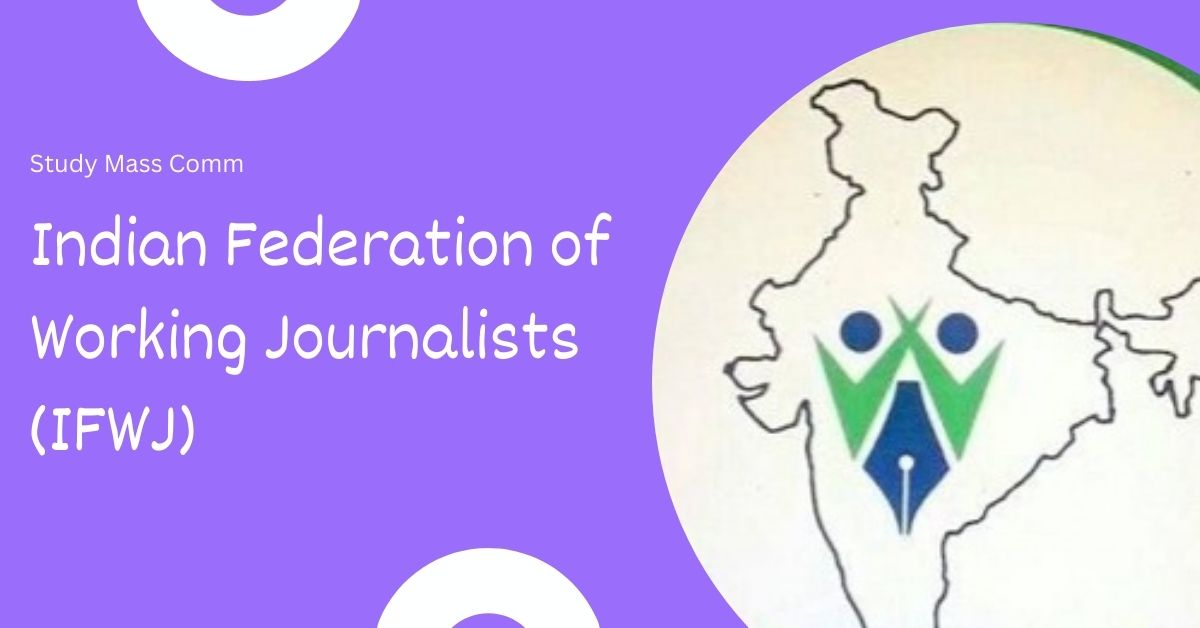This is one of largest journalist organizations in the world. It was founded in New Delhi on 28 October 1950. Indian Federation of Working Journalists is the first trade union of media persons after independence. It has now over 30,000 primary and associate members, working for electronic media, news agencies and 1,260 journals of 17 languages in 35 states and Union Territories combined. Overseas Indians, employed in other continents, are among its primary members.
Indian Federation of Working Journalists (IFWJ) Official Website: https://ifwj.in/
History of Indian Federation of Working Journalists (IFWJ)
Until Independence in 1947, the majority of the country’s journalists were active participant in the freedom struggle. After Independence, however, the anti-Establishment traditions of the community compelled it to tread a path different from that of the ruling politicians. Journalists found that the time had come to form a trade union organisation of their own. Twenty-three Working Journalists Organisations that existed at that time participated in the All-India Convention decided unanimously to form the All-India Federation and appointed a committee of seven members to frame a constitution.
Leading militant journalists, therefore, met at New Delhi in October 1950 and set up IFWJ with M. Chalapathi Rau as President. The federation, at its first session in Delhi, adopted a code of conduct for its members. It also demanded an enquiry into the conditions of working journalists and the repeal of the press laws. The demand was reiterated at its Calcutta session in 1952, when it formally demanded the appointment of a Press Commission to make a comprehensive enquiry into the entire working of the press. While the nation faced the Emergency and the beginnings of the coalition era, the IFWJ suffered a vertical split with the departure of a section of journalists. That we will discuss further.
Objectives of IFWJ
- To raise the status of members of the profession of journalism
- To promote a spirit of co-operation and understanding among working journalists
- To promote and maintain the highest standards of professional conduct and integrity
- To strive for the betterment of working conditions of journalists; specially salary, tenure of office and conditions of service and for prevention of society unrelated automation
- To safeguard and promote their interests generally, in particular to assist members where necessary in securing employment.
- To promote amenities for recreation and scope for social and cultural activities
- To build up and administer funds for the provision of legal aid, unemployment, disablement, retirement and death benefits of allied nature.
Activities by IFWJ
- As the only professional body of working journalists, having its branches in every city, town and publication centre of India, the IFWJ’s regional and territorial units have set up press clubs, press academies, reference libraries, training institutes and study circles. They publish professional journals and engage in activities like media researches, trade union struggles, human right campaigns, environmental protection and anti-war movements.
- The IFWJ is actively involved in the worldwide journalist movement. It has bilateral relations with over 47 national unions of the world.
- Persistent agitations by the IFWJ during these years resulted in several labour gains like the enactment of India’s first-ever parliamentary legislation in 1956, fixing regular hours of work, improving other conditions of service and wage scales and many successful legal battles. Creation of two Press Commissions (1954 and 1980), periodic wage revisions since 1959 and formation of statutory Press Council are other IFWJ achievements.
To learn about the Indian Newspaper Society (INS), explore this insightful article.
Organisational Structure of IFWJ
The IFWJ is headed by its president, elected in a nationwide direct voting by thousands of its primary members every three years. The President is assisted by a Working Committee which has a Secretary-General, four vice-presidents, six secretaries, a treasurer and 17 members of executive.
Source: Odisha Open State University




